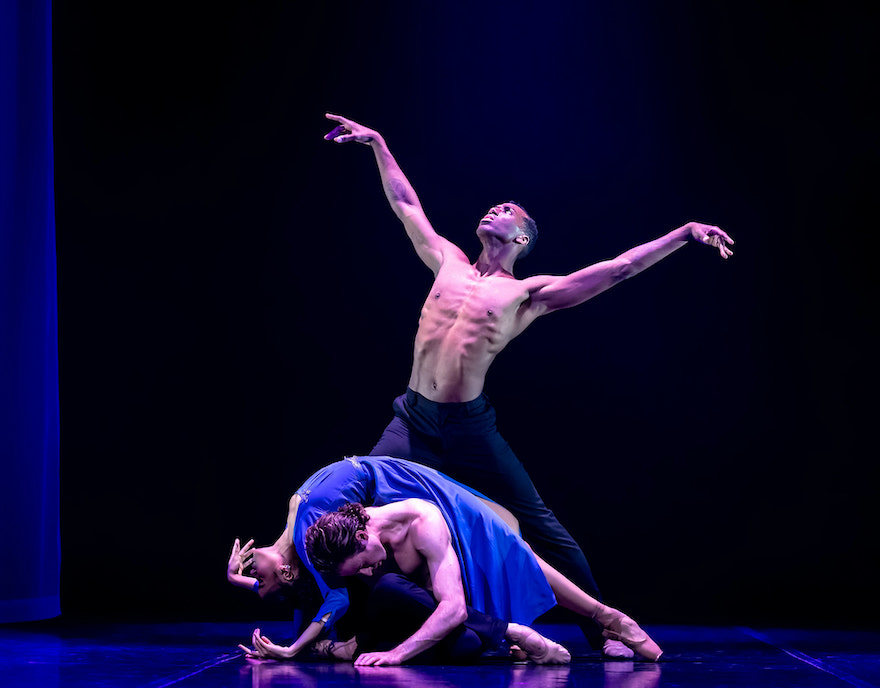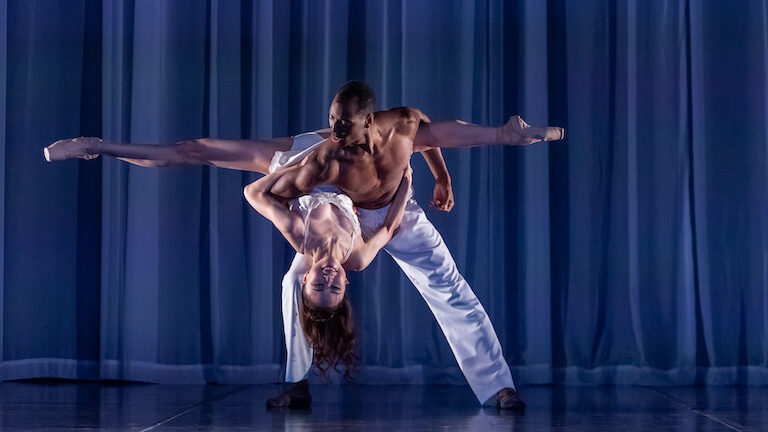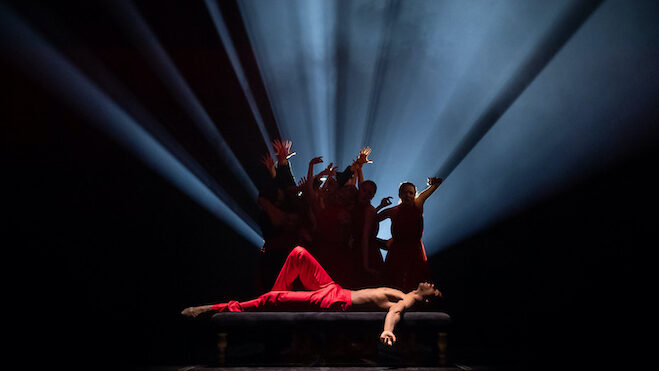Natalie Weir’s new contemporary ballet captivates with every waking moment, moving magically through the restless hours, writes Nina Levy.
Sleepless beauty to haunt your dreams
12 September 2022
- Reading time • 7 minutesDance
More like this
- How to watch ballet
- Fairytale leaps to life with fun twist
- Beauty and tragedy echo from canvas to stage
Goldberg Variations, West Australian Ballet ·
His Majesty’s Theatre, 10 September 2022 ·
I’m no stranger to insomnia. Too often I hover on the cusp of wakeful memories and twisted dreams. In her new work for West Australian Ballet, Goldberg Variations, renowned Australian choreographer Natalie Weir captures those drawn-out hours in a contemporary ballet that is at once relatable and fantastic.
As the name suggests, Goldberg Variations is danced to Johann Sebastian Bach’s 1742 work for keyboard, arranged here by Bernard Labadie for West Australian Symphony Orchestra’s Chamber Ensemble. The many layers and intricacies of the score were beautifully delivered by the ensemble on Saturday night, under the expert direction of Associate Concertmaster Riley Skevington.

If you’re not familiar with the 32 variations it could be easy to get lost in them, but Weir’s choreography – and its interplay with the work’s design elements – deftly leads us through the many repeating motifs and patterns.
While Goldberg Variations is not a story ballet, it contains a narrative thread, inspired by the legend that the music was created for Count Keyserling, who requested Bach compose music to “cheer” him during his many sleepless nights. And so Weir fashioned her ballet around an unnamed protagonist (Oscar Valdés) who spends a restless night with the memories of four “lost loves”.
Named muses, each former lover visits him over the course of the night, as does his younger self, Mirror (danced by Izaak Westhead). Tantalised and taunted, he descends from insomnia to mania.
Like its score, the work is layered. Weir intersperses solos and pas de deux (and more) with ensemble work to transport us between memory and reality, wakefulness and dreaming. Designer Bruce McKinven’s set, a series of four semi-sheer curtains, works with lighting designer Matthew Marshall’s shafts of haze-filled light to carve the stage into past and present, creating a sense of slippage between reality and dream.
There are layers of colour, too, associated with each muse, that become progressively richer and more vibrant as the protagonist’s grip on reality is loosened.

As Weir promises in her program notes, the ensemble sections – performed by seven men and seven women – borrow from the formality of the Baroque, stylised and elegant, with gorgeous twists of contemporaneity, a handstand here, the female dancers turned horizontal there. It puts me in the mind of the Netflix series Bridgerton; dramatic but playful.
Indeed, humour is judiciously sprinkled throughout the work, particularly as our hero is manipulated by a group of four unnamed puppeteers.
Each of the four muses dances an emotion-drenched pas de deux with the protagonist. We move from breathless and innocent joy with the White Muse, to the Blue Muse and passion that shimmers with quiet intensity. We dive into comical neuroticism and insecurity with the Pink Muse before encountering seduction and danger with the Red.
At times these pas de deux are pas de trois and more, as Weir cleverly weaves in shadow partners, like ghosts of the past.
There are so many visual highlights in this work, but a section near the end where the seven male ensemble dancers rocket back and forth before forming a neat undulating phalanx was particularly pleasing. A moment that sees a powerful searchlight divided into shafts that slice into the auditorium was also striking.

As the protagonist, Valdés gave a superb performance on Saturday night. Supple and fluid, he nonetheless captured the stuttering agony of being caught in a maelstrom of memory.
In the role of Mirror, young Izaak Westhead matched his senior’s presence – one to watch amongst the corps de ballet.
Nikki Blain captured the easy joy of young love as the White Muse, while Blue Muse Chihiro Nomura gave a glowing performance. Glenda Garcia Gomez delighted the audience with the tics and hiccups of the Pink Muse and Polly Hilton was seductive and voracious as the Red Muse.
It’s easy to see why Weir is so revered – the world she creates on stage is irresistible, recognisable yet magical, a seamless blend of music, colour and glorious, emotional movement that fills our hearts.
Goldberg Variations has got all the makings of a sellout show – don’t miss it.
Goldberg Variations continues at His Majesty’s Theatre until 24 September 2022.
The Red Muse brings seduction and danger. Photos supplied by West Australian Ballet are from a different cast; pictured are Juan Carlos Osma (protagonist), Alexa Tuzil (Red Muse) and the dancers of West Australian Ballet. Photo: Bradbury Photography
Like what you're reading? Support Seesaw.






